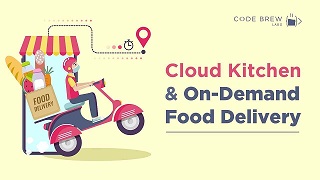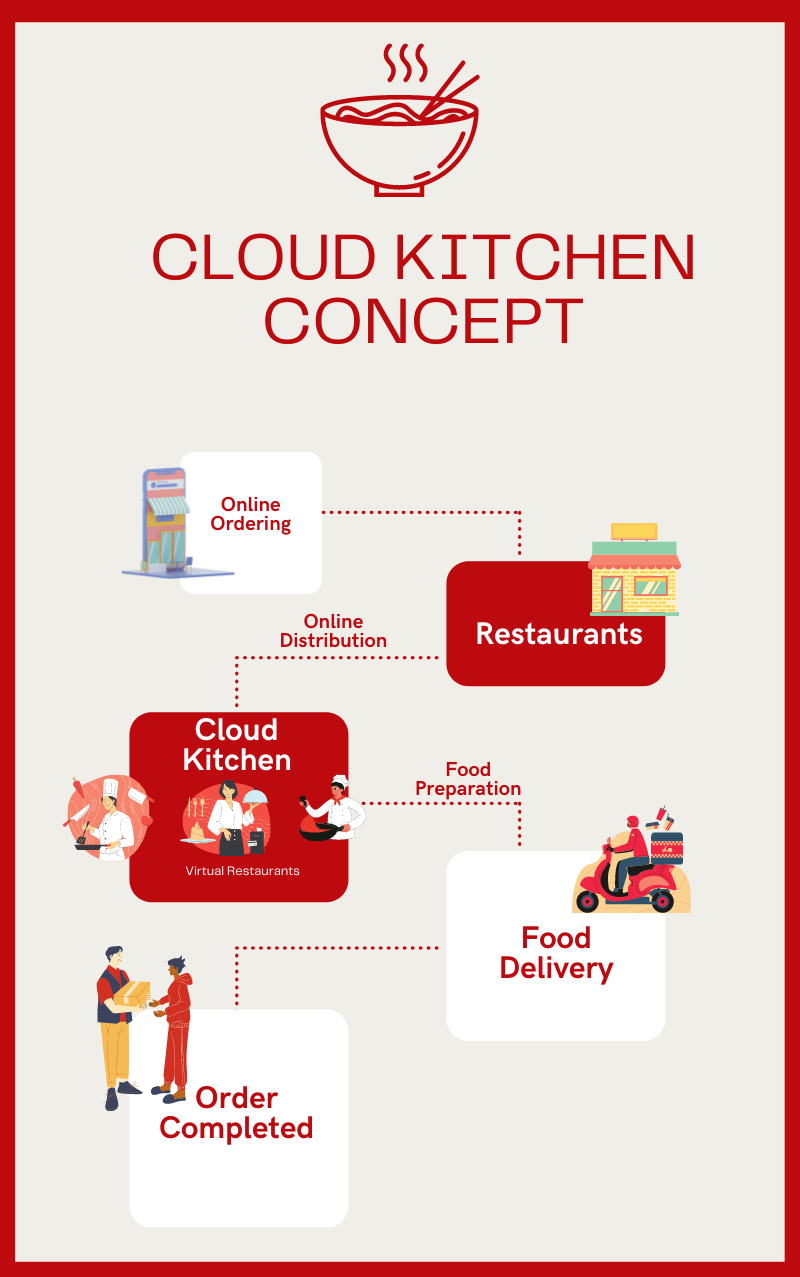
Cloud kitchens, ghost kitchens, shared kitchens or virtual kitchens – these are different names used to describe a restaurant concept gaining popularity in recent times. Cloud kitchens are spaces where many delivery only restaurants co-operate.
Delivery optimization is not a new kid on the food market block. It is, in fact, the foundation of the success story of pizza industry. However, the delivery-only concept has started to gain more acknowledgement as the consumers are shifting to on-demand food delivery instead of visiting the restaurants. Along with consumer behavior, technology is a major driving force behind the success of cloud kitchen model.
Before moving forward, here is a scoop on how cloud kitchens work?
A cloud kitchen is a licensed commercial food production facility where a few to dozen of restaurants can rent a space for preparing delivery-specific menu items. A cloud kitchen may follow either of following models:
The cloud kitchen model is very flexible and varies based on the scale of business.
Cloud kitchen can be segregated into five different models.
Ghost Restaurant: This is the fundamental concept of a cloud kitchen. Practically, a ghost kitchen has its own kitchen space, staff, and other operational requirements; however it does not offer a food truck or pick-up destination. A ghost kitchen is identified as a single business and runs as a brand.
Shared Cloud Kitchen: As the name suggests, in this model different brands rent a part of business building serving as kitchen space. This model is comparable to co-working space with different food producers having their own area in the kitchen space. This model helps in reducing the operational cost for every food producer as the rental fee and facility cost is shared.
Hybrid Cloud Kitchen: This model combines the concept of ghost kitchen with physical store. The restaurant offers delivery as well as take-out facility to its customers. Although this requires higher capital but the model offers better customer relationship management.
Aggregator Cloud Kitchen: This concept involves a delivery service that partners up with multiple restaurants sharing a kitchen space to deliver variety of cuisines to its customers. If the delivery service decides to set up its own kitchen, it transforms into a cloud kitchen. In this model, the kitchens are only responsible for food preparation, while the delivery service holds the responsibility of customer acquisition and order management.
Full-Outsourced Cloud Kitchen: This is not a kitchen. It actually acts as an agent that accepts orders from customers and distributes it to kitchens. Once the orders are ready, it collects food and hands it to the delivery service. The focus of such model is on building on-demand food delivery system.
See Also: Zomato Business Model – Revenue Model and How to Build an App Like Zomato?
Cloud kitchen model or ghost kitchens are becoming immensely popular. Why so? It offers a number of benefits. Here is a list of benefits of cloud kitchens:
The functioning of a cloud kitchen is very simple. It can be understood as a stepwise process.

Cloud Kitchen Concept
A cloud kitchen requires technology solutions such as integrated restaurant ordering system to operate and serve the customers effectively. Here is a list of technology requirements of a cloud kitchen:
The best way to launch your cloud kitchen business is to build your on-demand food delivery app. The on-demand food delivery app offers an advanced ordering platform, intuitive delivery platform and a powerful admin dashboard to allow you to have complete control over the cloud kitchen business.
If you have a cloud kitchen idea, click here to validate your idea.
The cost of building on-demand food delivery app depends on numerous factors such as advanced features included, platform compatibility, development hours, location of developing team etc. The actual development cost may range from $5K to $10K. An affordable solution is to choose ready-to-use solution offered by Code Brew Labs. The solution offers the benefits of flexibility to customize, advanced features and low cost.
